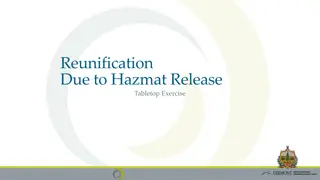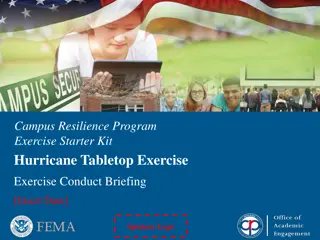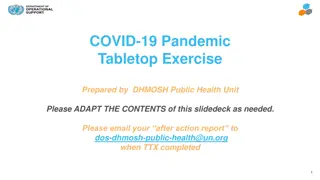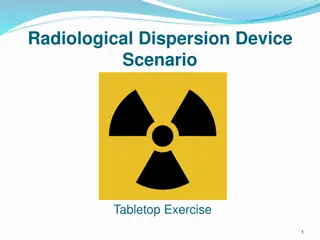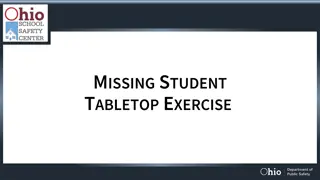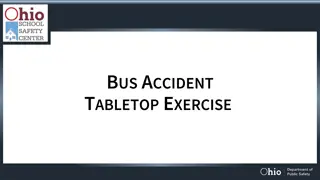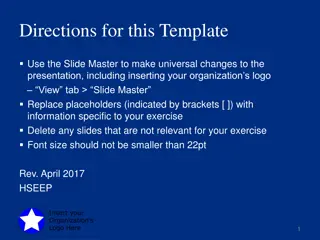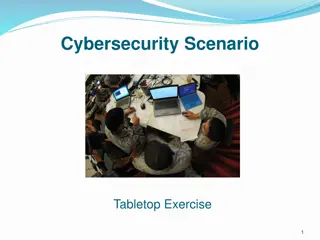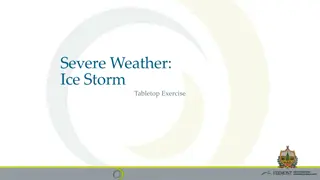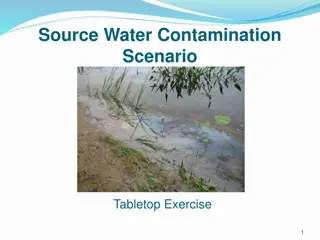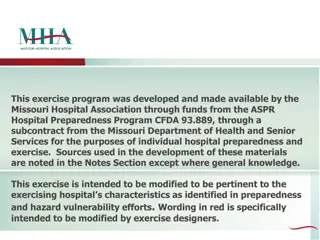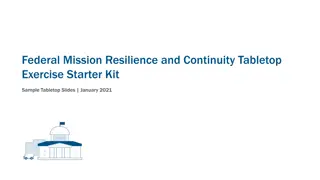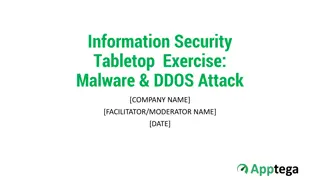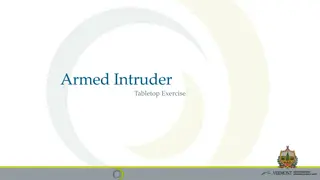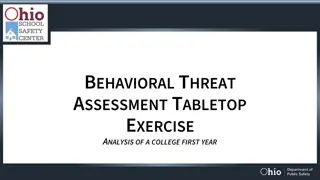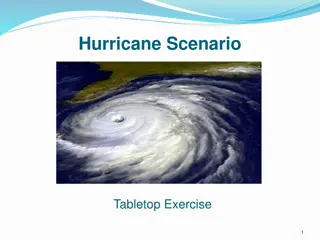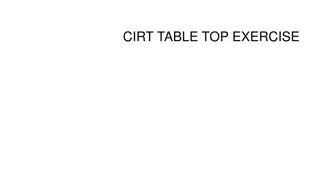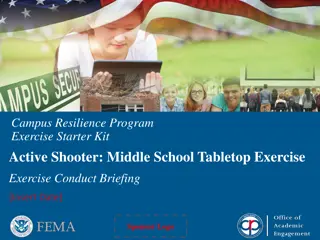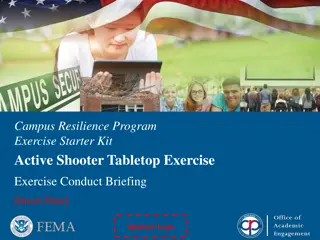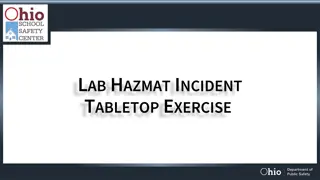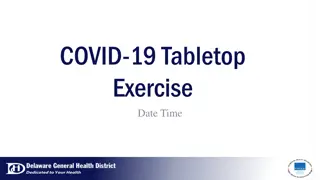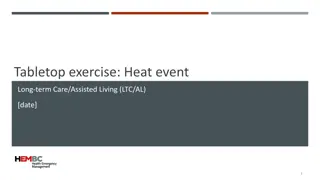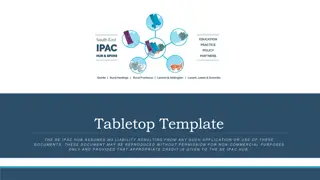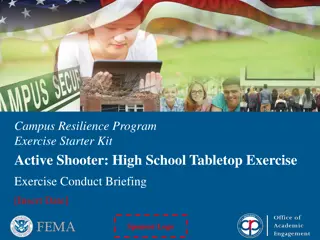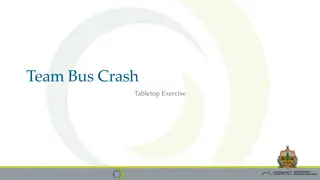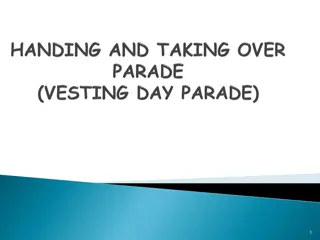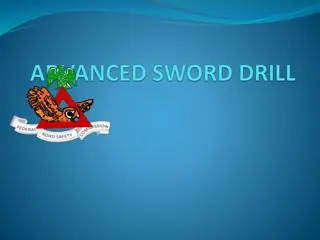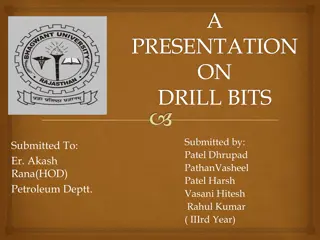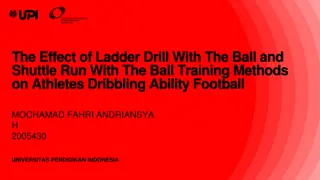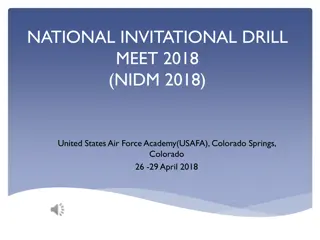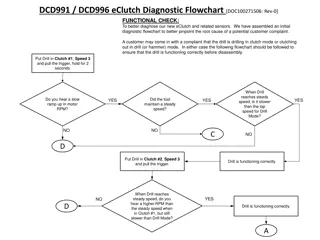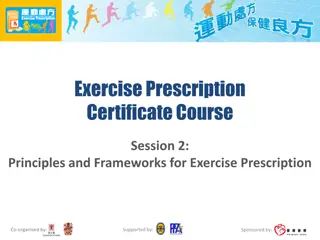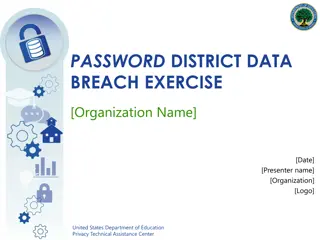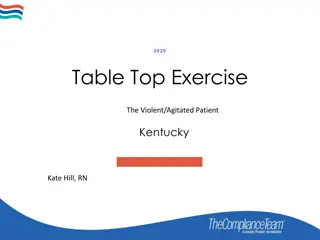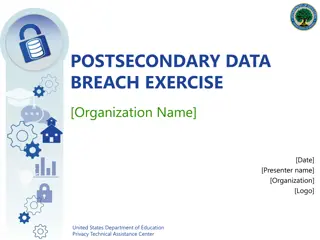Animal Escape Drill and Tabletop Exercise Overview
Understanding the importance of animal escape drills in institutions is crucial for all staff members. The drills prepare individuals for potential emergencies involving dangerous or mobile animals, ensuring the safety of both employees and guests. The focus is on exposure, initial preparation, and developing a better grasp of Incident Command procedures. By familiarizing ourselves with all moving parts and roles, we can effectively respond to unpredictable situations. The drills provide a valuable learning experience with the goal of accreditation and conducting two full-scale exercises annually.
Download Presentation

Please find below an Image/Link to download the presentation.
The content on the website is provided AS IS for your information and personal use only. It may not be sold, licensed, or shared on other websites without obtaining consent from the author. Download presentation by click this link. If you encounter any issues during the download, it is possible that the publisher has removed the file from their server.
E N D
Presentation Transcript
ANIMAL ESCAPE TABLETOP DRILL YOUR INSTITUTION
ANIMAL ESCAPE DRILL What is an Animal Escape Drill? What does it mean to you? What are you supposed to do? What it means to other staff?
What are doing here today? Better understanding of Incident Command Begin to Know/understand everyone s Role Familiarize ourselves with what may happen Basic Understanding We cannot predict every situation
Animal Escape Animal Emergencies that involve highly dangerous or highly mobile animals (elephant, jaguar, ostrich, etc.) may differ from animal emergencies with non-dangerous animals (birds, reptiles, some Hoofstock). An Animal Escape affects the entire zoo. During an Animal Escape, all staff should be on stand by . Radios should be monitored so that all staff are aware if the Incident Commander needs assistance from specific staff.
Animal Escape Radio silence should be observed during an Animal Escape. If the Zoo is closed all gates should be secured, and employees and guests should seek shelter inside a building immediately (unless otherwise directed). In the event that an Animal Escape, where the animal is contained within a holding or exhibit area, the Incident Commander may decide to close the exhibit area only and leave the zoo open.
ANIMAL ESCAPE FOCUS AND GOALS OF THIS TABLETOP DRILL Exposure and Initial Preparation Better understanding of Incident Command Better understanding of all Moving Parts This is a Learning Experience , no wrong answers Two Full Scale Drills a Year AZA Accreditation
ANIMAL ESCAPE DRILL What is your primary responsibility? ANIMAL PROGRAMS SECURITY FACILITIES GUEST SERVICES FOOD SERVICES HORTICULTURE ADMINISTRATION
SECURING GUEST What steps to Take? Direct guest to secure locations What do you say? We have an emergency situation, as a precaution please immediately move to the [nearest secure building] I don t have all the information, except that we are taking precautions for everyone s safety What if a guest doesn t cooperate? Social Media/Text/Twitter implications
ANIMAL ESCAPES Think About: What is your primary responsibility? What Animal Escaped? Location? Who oversees the incident? You may not have contact with your Supervision What Steps need to be taken?
ANIMAL ESCAPE DRILL RECAP After each drill, a debriefing occurs Furthers institutions preparation AZA Accreditation documentation Review your current emergency plan Think about situations Feedback from the areas on prep
How the Tabletop Works Each group has a dice Roll when told too After Each roll compare number to number on the slide Discuss your thoughts. Each member has 2 minutes to get their point across (Remember in an actual scenario or drill you also have limited time)
First Roll Day of the Week First Roll Sunday Morning before 9 am Tuesday Morning around 11 AM Saturday Afternoon 3 pm Friday Morning at 8 am Wednesday Morning at 10 am Thursday Afternoon at 430 pm 1. 2. 3. 4. 5. 6.
Second RollAnimal Escape Lion Chimpanzee Grizzly Bear Rhino Polar Bear Cougar 1. 2. 3. 4. 5. 6.
Second Roll - Discussion What type of animal has escaped? Think About in your role what would you do? What is your initial reaction? What would you be doing at this point?
Third RollAnimal Travels Still next to their enclosure/night house Going South behind the scenes Going North behind the scenes Into a guest area towards south end of zoo Into a guest area towards North end of zoo Into a guest area towards the middle of the zoo 1. 2. 3. 4. 5. 6.
Third Roll Discussion The location of the escaped animal Think About 1 minute for each player to discuss The direction or movement it has taken What would you be doing at this point?
Fourth Roll Developments Keeper has been injured during the escape Guest are within close proximity of the escaped animal Team has lost sight of the animal at this point Golf Cart is heading in the direction of the animal's location Staff member appears within 50 ft of the animal A hard rain starts pouring down 1. 2. 3. 4. 5. 6.
Fourth Roll Discussion Each player has 1 minute to discuss how they understand the zoo is reacting as a whole Think About 1. 1 minute for each player to discuss Each player should discuss their reaction 2.
Fifth Roll Developments Visitors Start videoing and resisting being evacuated Police show up on scene News Helicopter starts hovering above the zoo Contractor/Vendor shows up in area of animal Fire Department shows up at Front gate Media shows up at zoo 1. 2. 3. 4. 5. 6.
Fifth Roll Discussion Each player has 1 minute to discuss how they understand the zoo is reacting as a whole Think About 1. 1 minute for each player to discuss Each player should discuss their reaction 2.
Animal Escape Wrap-Up Animal is recaptured Each group makes debriefing notes Each group makes presentation on escape and debrief What would they do differently? What are concerns they have? After each group has presented Next steps What was learned


